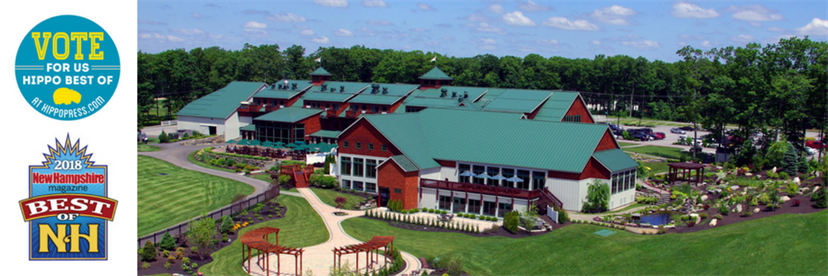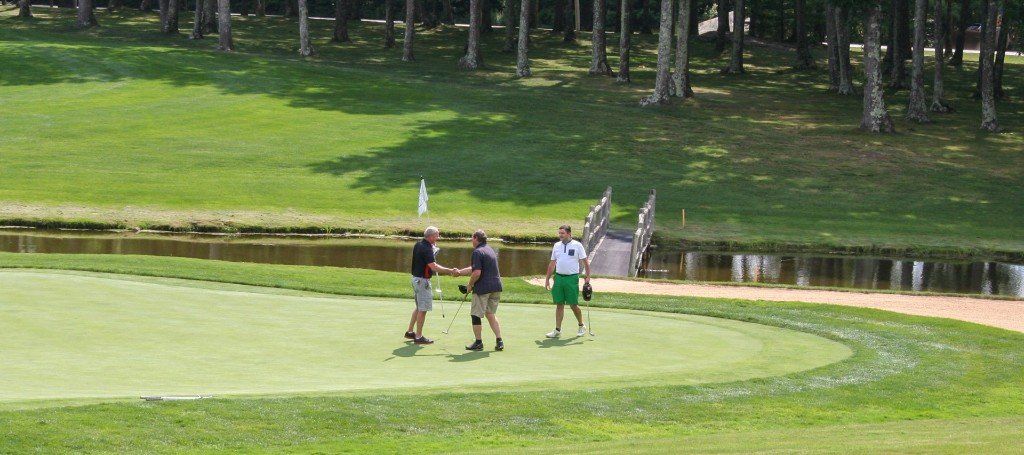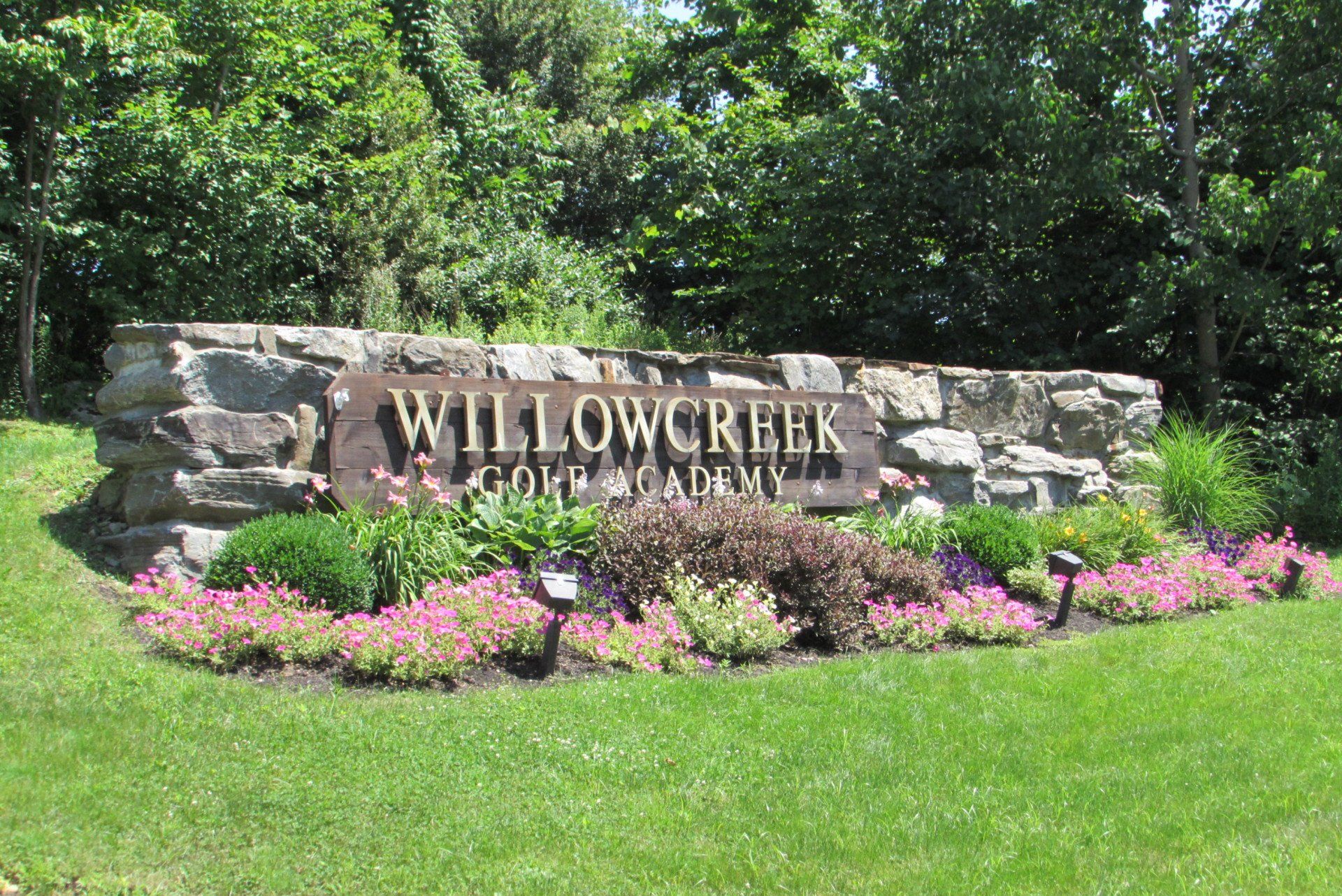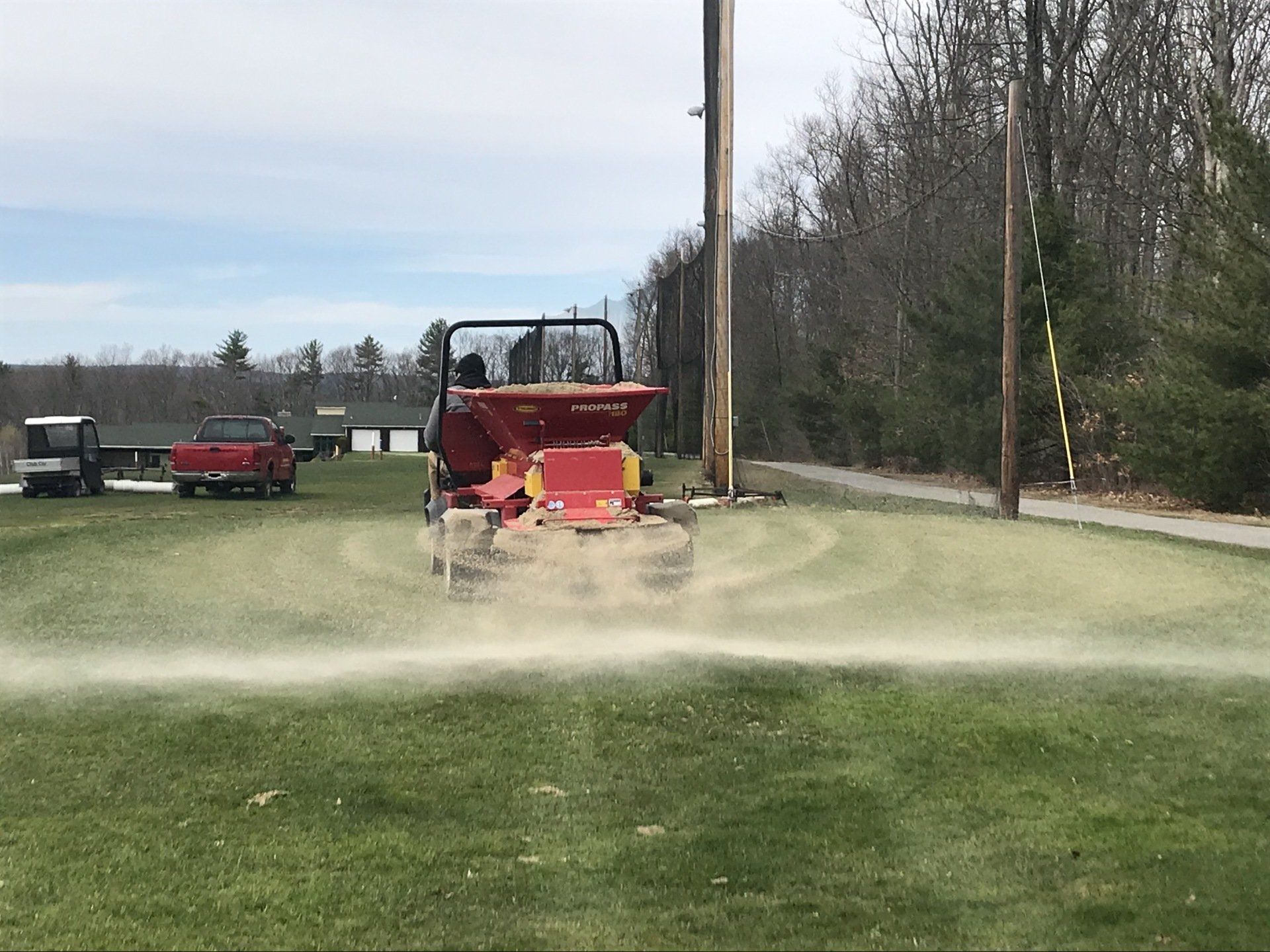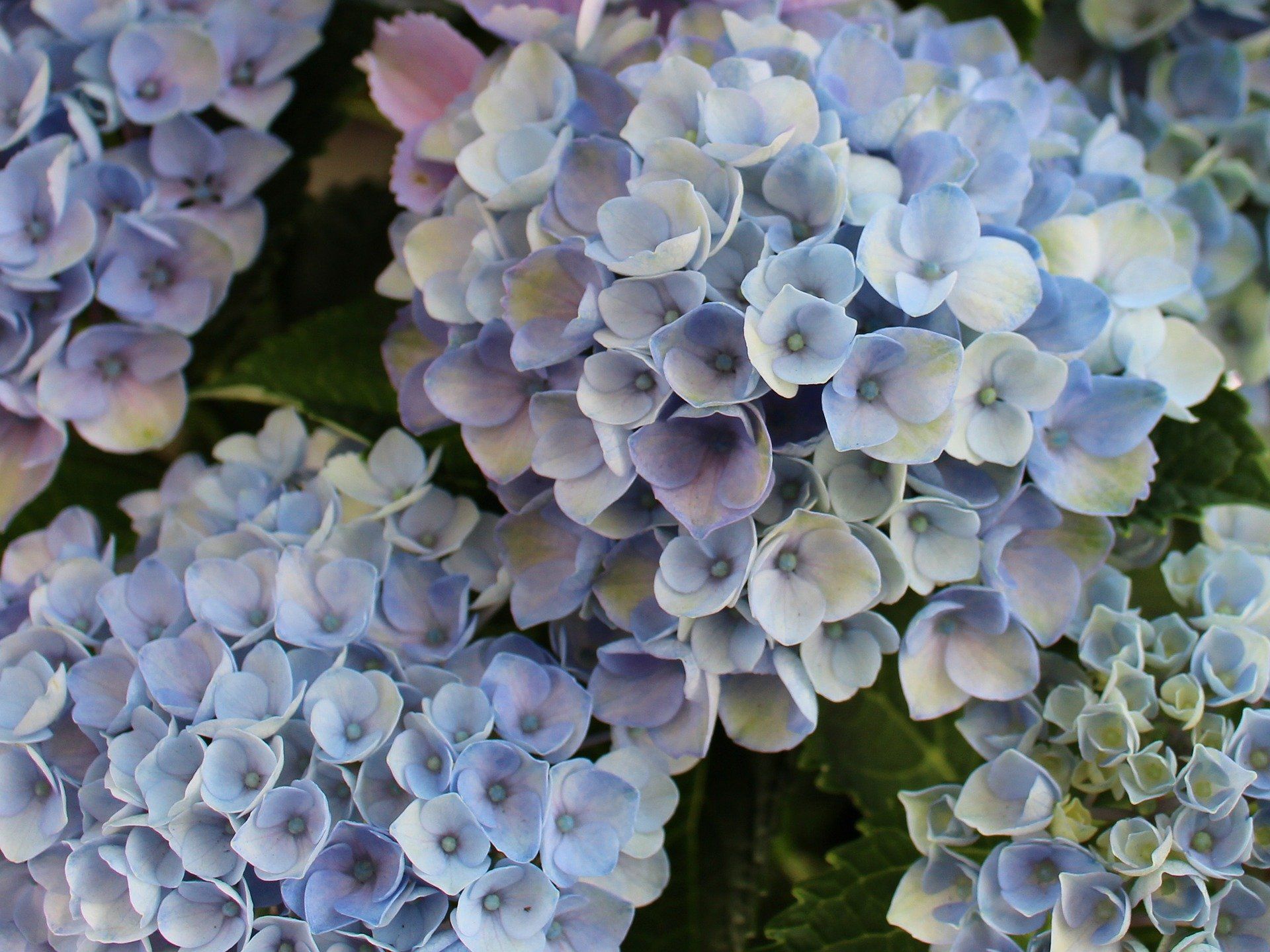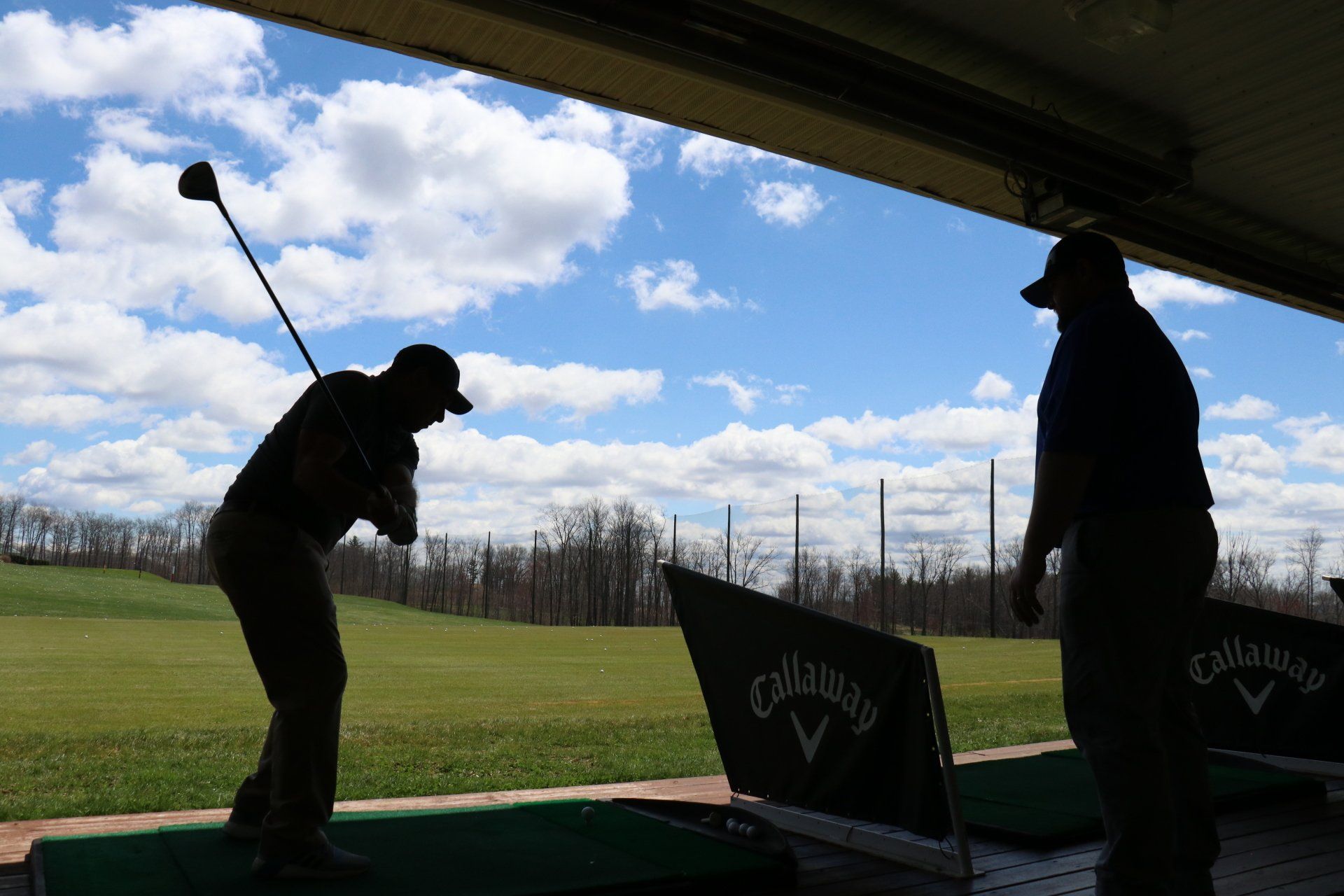Keeping Greens Green and More Tips from a Golf Course Maintenance Expert
Our Golf Course Superintendent, Eric Whitmore has been working on perfecting our greens and fairways for years – in fact, he said, “
we are blessed to have a solid crew that works year-round on the course and has combined over 125 years of experience.”
We’d say that he’s a subject matter expert on golf course care. We caught up with Eric to talk about all the things he does around our golf course throughout the seasons to keep playing conditions ideal.
Did you know that, by season you need to do certain things to maintain a course? Eric offers the following:
SPRING
“The first thing that comes to mind as far as seasonal maintenance is aeration. Aeration is performed in late spring and early fall. Core aeration involves physically removing small soil cores from the turf. Aeration holes allow excess moisture to evaporate and promote gas exchange in the soil, resulting in stronger root systems and turf that is better able to tolerate golfer traffic. The addition of sand, both firms and smooths the green surface allowing for consistent roll and speed.
Every spring we apply pre-emergent herbicides in combination with fertilizer to ensure high quality weed-free roughs and green surrounds. At this time we will also apply wetting agents to improve water holding capacity of soils to help ensure quality turf in areas where we are lacking in irrigation. Most of the chemical applications have to be made in conjunction with rain fall events to ensure the chemical makes its way into the soil.”
SUMMER
“In the summer when temperatures spike above 80 degrees, all cool-season turf grasses (i.e. annual bluegrass, creeping bentgrass) are in danger of heat stress. The turf will wilt and if temperatures stay hot enough, it will eventually die. Greens are the most susceptible to high temperatures because of the low mowing height. With so little biomass the plant cannot sustain the heavy injury that turf at higher mowing heights can withstand. Syringing implies a light application of water to the green surface in its entirety. It is not an adequate amount of H2O to sustain plant life, but more of an effort to reduce soil and plant tissue temperatures. Timing is a key factor in deciding when to syringe. At points during the day when temperatures rise is often when the golfer will see the crew syringing typically early afternoon. This simple yet important process has saved, and will save, numerous greens. We apologize for the inconvenience it may cause but know that we would not do it if it were not important.”
FALL
“In the fall we are inundated with falling leaves and must take the extra time to clean playing surfaces prior to and after mowing. Mother nature typically does not cooperate, with swirling winds and morning frost that further delay our attempts to ensure quality playing conditions. It is also at this time that we must blow out the miles of irrigation lines on the property to prevent as much freeze damage as possible to the extensive irrigation system.”
WINTER
“During the winter we attempt to remove ice cover from greens as quickly and safely as possible. Ice coverage on greens creates anaerobic conditions and build ups of toxic gases that can kill turf. We have to weigh the benefits of removal, timing of removal, and potential for mechanical damage to greens to make the decision of when to start breaking it up. This is also a time of year where we do a lot of tree limb trimming and brush removal.”
Courses require certain chemicals to remain playable. Eric said, “There is a plethora of chemicals and nutrients used on sports turf surfaces. From greens, tees, rough, fairways, to clubhouse lawns, all are treated specifically to their own needs. Soil tests are preformed throughout the year on all surfaces to determine exact nutritional needs and applications are made accordingly. Fungicide and Insecticide applications are based on timings of disease and insect pressures. All chemical applications are posted at the Starter Shack.”
Would you like to learn how to maintain a golf course or grass in general? Consider Eric’s advice below:
“The greatest teacher is experience, however, having a solid foundation of knowledge in plant physiology, plant pathology, and chemistry are crucial to making the right decisions in both chemical applications and cultural practices. Most superintendents earn degrees in Turf Management or other Horticultural fields. Knowing and loving the game of golf is also very important. It is one thing to know how to maintain healthy turf, but another to know how a course should play, the design aesthetics, and subtleties of course setup and layout. All of which are learned from playing golf and acquiring a good grasp of course etiquette.”
Are you wondering if you have been playing on a badly-kept course? Eric said you probably won’t find one around here. He said, “Course conditions are a result of their inputs. A course with the resources to provide optimum playing conditions will show that. Courses that may appear to be poorly kept are most likely incredibly kept given the resources the superintendent has at their disposal."
The real difficulty associated with course maintenance is upholding standards well before a golfer comes to play. Eric said, “The most difficult part of course maintenance is getting the course in pristine condition before any golfers arrive at the first tee box. Daily maintenance must be completed quickly and cleanly. Every day we are working on the course long before the sun rises. The goal is to put out championship quality conditions on a daily basis without anyone seeing us do it. Any hiccup, whether it be, weather, equipment or personnel, can seriously impact the days maintenance and the courses playability. Our ability to improvise in these situations is what makes us great at what we do.”
As a lawn owner, you can take some pointers directly from our Grounds Crew professionals. Eric said, “The best thing homeowners can do for their lawns is properly timed fertilizer applications. Right around the first time you need to mow your lawn in the spring, you should apply a generic ‘weed and feed’ fertilizer to your lawn. These contain both fertilizer and pre-emergent herbicide to promote healthy turf and prevent weeds like crabgrass all summer long. Another application of fertilizer with grub control should be made in early to mid-June. In the fall, your lawn is looking for the nutrients it needs to recover from summer damage while getting ready for its winter nap. Feeding now will strengthen roots and increase nitrogen storage for a healthy, green lawn next spring.
Water is becoming an ever more precious resource and should be used responsibly. I cannot tell you how many times I’ve seen lawn irrigation systems running in the pouring rain. For ideal lawn conditions, water deeply and infrequently. Be sure to turn off your irrigation for a few days following a rain storm to avoid both wasting water and over saturating your soil, stunting your roots.
When mowing your lawn you never want to cut more than the top 1/3 of leaf blade in a single mowing. This reduces the stress on the plant and ensures you won’t scalp uneven areas of your lawn.
Following these steps should ensure premium year-round lawn conditions.”
--
Are you looking forward to hitting the Atkinson course on opening day? So are we! But, if you are looking to stay loose in the meantime, consider a lesson at the Willowcreek Golf Academy
or a virtual golf
tee time in the Merrill’s Tavern Game Room.



